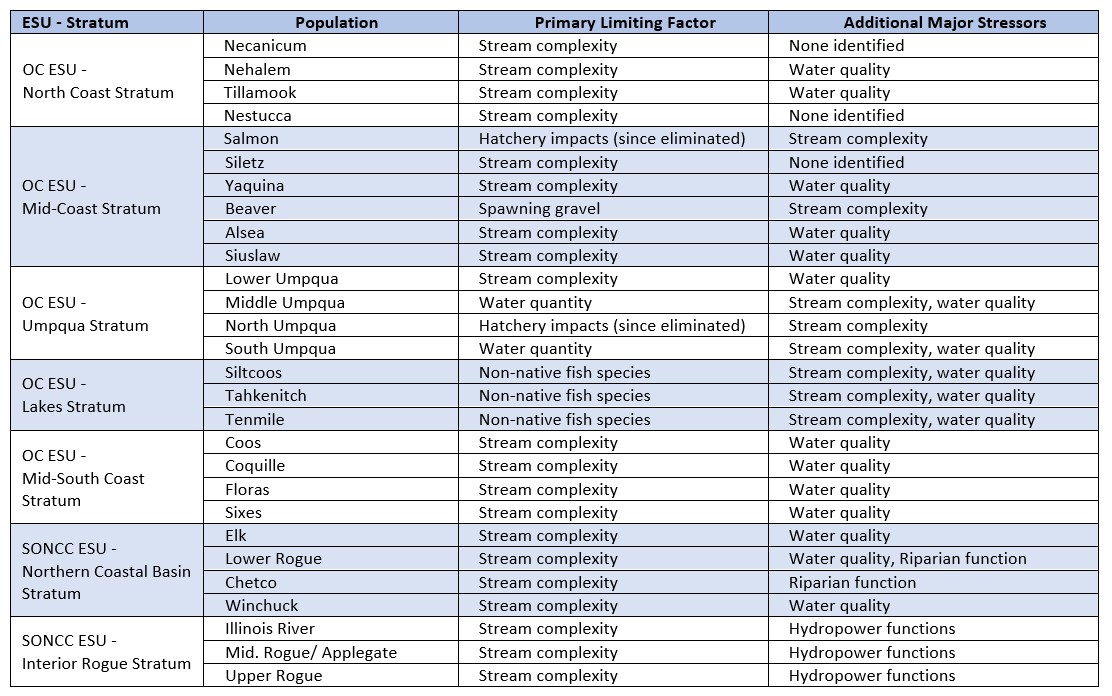Watershed Health and Limiting Factors
Like other salmonids, coast coho rely on a diverse suite of habitat types (or “components”) that individuals rely on during different stages in their life cycle. In coastal watersheds, these habitat components include uplands, mainstem rivers, tributaries, off-channel areas, freshwater wetlands, lakes, and estuaries. Each of these components is characterized by numerous “key ecological attributes (KEAs)” that collectively comprise healthy, productive habitat. Examples include floodplain connectivity, instream complexity, water quality, and riparian function. When a particular KEA is degraded or lost, limiting the abundance of a population or some segment of a population (called a “meta-population”), it is referred to as the “limiting factor.” Restoration planning often seeks to eliminate or reduce the limiting factor at some selected scale (the whole watershed, a sub-watershed, or even a tributary reach) because it presents a bottleneck for the population or meta-population.
In the Oregon Coast (OC) coho ESU, reduced instream complexity is the most common limiting factor across the ESU’s 21 populations. Complex instream habitats are particularly important for winter survival of juvenile coast coho because they provide shelter from high flows, cover from predation, and sufficient food resources. High instream complexity also supports cool, off-channel areas which provide refuge from high water temperatures found in stream channels during summer months. Elevated water temperature threatens the fitness, mobility, and survival of juvenile salmon and is often determined to be a primary or secondary limiting factor to OC coho populations.
Habitat conditions that create sufficient complexity for juvenile rearing include large wood, pools, connections to side channels and off-channel alcoves, and beaver ponds. These and other habitat conditions necessary for coho survival are maintained through connections to the surrounding landscape, especially forested riparian areas, freshwater wetlands, intact floodplains, and upland timber stands. Beavers are particularly important to coho in creating critical off-channel rearing habitats coast-wide.
Two other stressors – degraded water quality and reduced riparian function – are also key concerns in many population areas. These two conditions are often linked since functioning riparian areas improve stream health by shading stream reaches and reducing runoff of sediments and potential pollutants to streams. Especially in the Southern Oregon Northern California Coast coho ESU, many streams and rivers also suffer from insufficient flow during critical periods, making altered hydrologic function another prevalent issue. Coho populations in the Rogue and Klamath Rivers are severely impacted by elevated water temperatures which act as fish passage barriers, impeding migration and access to cold water habitats.
Finally, coast coho populations in the coastal lakes stratum on the mid-coast are limited by predation from introduced warm water fishes, such as smallmouth and largemouth bass.
Limiting factors and other major stressors for
independent populations in the OC and SONCC Coho ESU’s.

